Country Victoria still has an insatiable appetite for Chinese-Australian food
The gold rush continues in country Victoria as our appetite for a hybrid Australian-Chinese cuisine remains part of our DNA. But why are we still infatuated with lemon chicken and prawn toast?
VIC News
Don't miss out on the headlines from VIC News. Followed categories will be added to My News.
IT might be meat and potatoes country up Bendigo way, but the good folk living among its gums and gullies have always had a soft spot for lemon chicken, sweet and sour pork and special fried rice.
On a warm autumn morning, all three are coming out of the kitchens at Toi Shan Chinese Restaurant in Mitchell St and enlarging a lunchtime smorgasbord that already includes fried wontons, sweet corn chicken soup and beef in black bean sauce.
“Pretty good value, I reckon,’’ one local says. And he’s right. The mostly Anglo-Australian diners queuing up at Toi Shan’s steaming bain marie are loading their patterned melamine plates with all they can eat — for only $13.
MELBOURNE’S MOST POPULAR CHINESE RESTAURANTS
DELICIOUS.100: WHERE TO FIND THE BEST SPICY FOOD IN MELBOURNE
Down the road, at Kangaroo Flat, Jin Yang is doing a brisk trade in crab sticks, crispy pork, and fried duck with pineapple.
This hospitable ’80s-style Chinese restaurant has just changed hands for the first time in decades but its new owners are still pleasing punters with dishes that ring age-old takeaway bells. Dragon Luck chicken? Coming right up.
Bendigo has about 20 restaurants serving Chinese food and Leigh McKinnon, a researcher at the city’s Golden Dragon Museum, says “at least half have been around all my life’’.
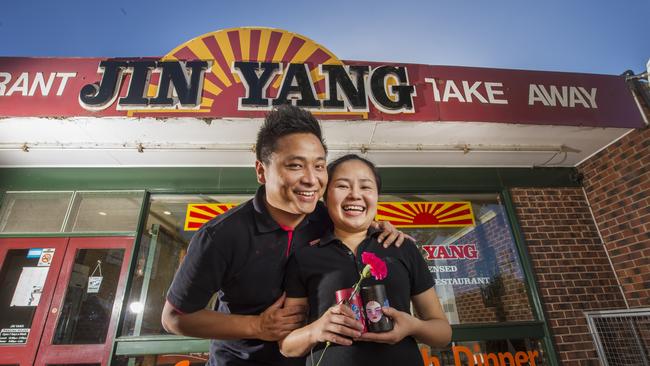
“If you look at the people who founded many of them, you can see family connections going all the way back to the gold rush period,’’ McKinnon says.
Toi Shan has been continuously in business at two different sites since 1908 but our enduring appetite for Australian-Chinese fare extends well beyond Bendigo.
Mei Ling in Geelong, New China in Castlemaine and Shepparton Family Restaurant still carry a torch for this hybrid cuisine. To enter these dining dens, and others like them, is to be transported to an older Australia, a largely monocultural society that was prepared to explore Oriental exotica so long as it came with fritters, fish tanks and fortune cookies.
To road-weary truckies, Australian-Chinese restaurants were prawn cracker pitstops.
To farming families, they were Sunday-night treats with canned lychees and ice cream.
Older people in Bendigo remember lugging kitchen pots into Toi Shan, ladling chicken chow mein into them and wrapping the lot in a bath towel to keep the food hot.
“Australian-Chinese food is deep in our DNA,” Weekend food writer Kate McGhie says.
So deep, it’s hard to shake the memory of our first stir-fried beef, seafood combination or pineapple fritter.
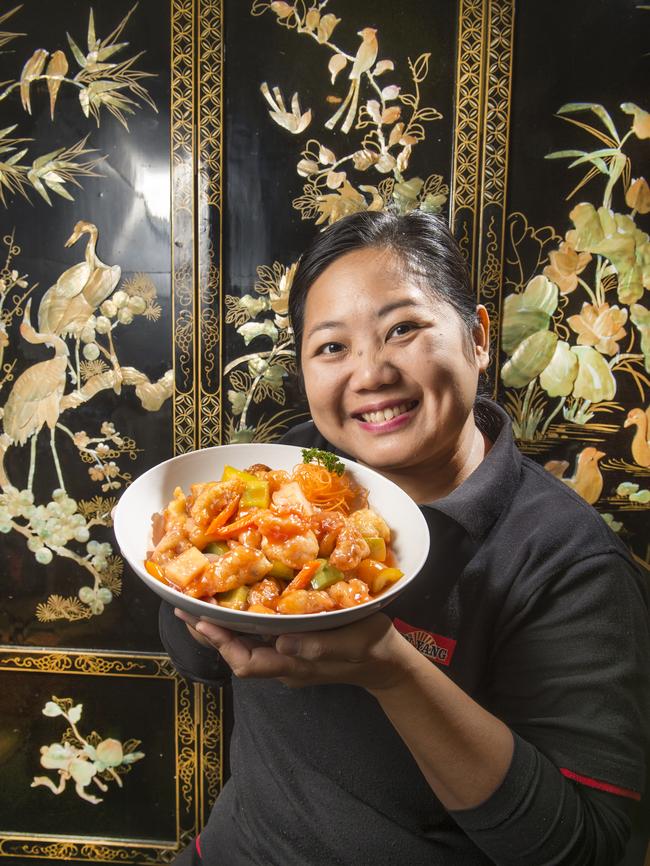
“In the 1960s and ’70s, these restaurants opened the door to another world of eating and it was very exciting until we started to travel more and develop more sophisticated tastes,” McGhie says. “The thing is, we go back to that. Like ham and pineapple with Italian, we know it’s not authentic but this food reminds us of a time when we felt safe in the love of family, in the spirit of community.’’
Chinese food in Australia goes back a long, long way. Stephen Downes’ 2002 book Advanced Australia Fare reminds us that labourers (coolies) from China cooked for some of the colony’s “best families”.
WHERE TO EAT IN REGIONAL VICTORIA: THE 20 BEST RESTAURANTS
TIPS TO MAKE DUMPLINGS FROM EXPERT TONY TAN
In the 1850s, thousands more “Sino miners” joined the rush to be rich on central Victorian goldfields. The “cook houses” they established on the diggings, such as John Alloo’s Chinese restaurant in Ballarat, were immortalised in S.T. Gill’s watercolours, but as Downes writes, “Alloo’s plum puddings and boiled joints were already more Australian than Chinese, prefiguring the myriad cafes that followed with their ‘Chinese-Australian’ meals.”
A third of all chefs in Australia in the 1890s came from China, with the east end of Little Bourke St becoming the epicentre of Melbourne’s Chinatown.
The White Australia policy, introduced in 1901, stopped Chinese immigration in its tracks, but historian Barbara Nichol reports that rules were bent between the wars so restaurants could import chefs and cafe workers from southern China.
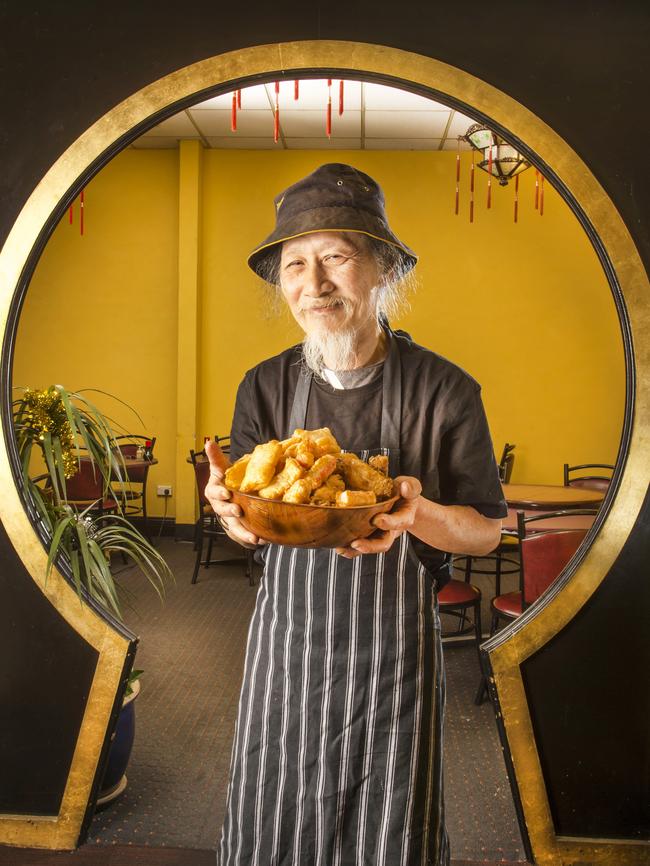
“The overwhelming majority came from Kwangtung Province in southern China,” she writes in Sweet and Sour History: Melbourne’s Early Chinese Restaurants. “This area was known for its distinctive Cantonese cooking style based on fresh fruit and vegetables, fish, poultry and pork. Rice was grown in abundance and served as a nutritious base.”
US servicemen, posted here during World War II, regarded Chinatown’s dim sims as a worthy substitute for hamburgers and, according to Nichol, hastened the “widespread acceptance of Chinese restaurants’’ in Melbourne and beyond.
“Chinese restaurants were also popular with the Americans because they tended to open late into the evenings and on Sundays when many other eating places were shut. American servicemen were culturally diverse, and for those of Chinese and similar backgrounds, Chinese restaurants (in Melbourne) were a source of familiar food and company.”
By the 1950s, with Australia opening up to the world, the “local Chinese” was ubiquitous in regional centres. Some of these post-war cafes served heavily Australianised fare, often with an iridescent glow.
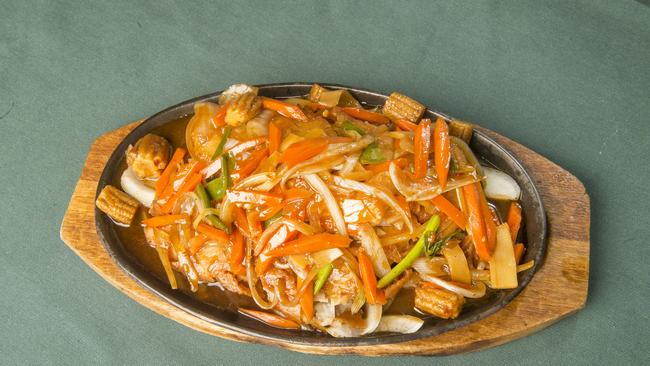
Others enlarged on traditional Cantonese cuisine, adding beef and local fish (snapper, Murray cod) to their copious (and invariably numbered) menus.
Dessert was always an afterthought.
“The Chinese discovered very early that we liked things a bit sweeter than they did, hence the use of pineapple,’’ McGhie says.
Into the 1990s, the Bellarine was well served by the fondly remembered Tien Wah.
Today, 35-year-old Mei Ling flies the flag for tradition in Geelong with a request on its takeaway menu to “please leave the front light on to help with delivery”, while Castlemaine’s New China — 34 years young — is pure ’80s, from its gold-flock wallpaper to its red and gold wooden gateway.
Owner/chef Danny Chia, from Malaysia, settled in Castlemaine “because it’s such a lovely town, we wanted to stay” and serves Australian-Chinese classics, plus some Indian, Thai and Indonesian dishes. Even kangaroo with honey-soy sauce.
At New China, all the sweet and savoury sauces are made in-house, not forgetting the dim sims and spring rolls, and every dish is garnished with a slice of lemon and julienned carrots.
What’s Castlemaine’s favourite dish?
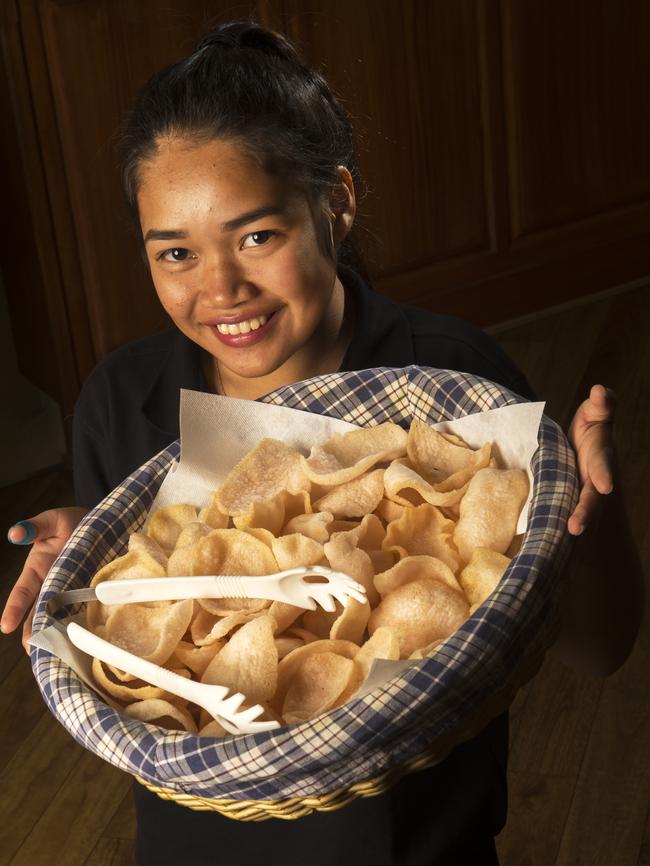
“The lemon chicken every time,” Chia says.
Toi Shan, founded by Peter Louey Mow, is believed to be the oldest Chinese restaurant in Australia, so venerable it is honoured with a display of archive objects at the Golden Dragon Museum. But as McKinnon points out, it’s the restaurant’s daily hustle and bustle that really counts.
“The two cultures, Australia and China, have always come together in Bendigo’s Chinese restaurants,” he says. “There’s still a great spirit of inclusion, a sense of warm hospitality.”
Growing up in the district, McKinnon remembers “it was very much a Sunday-night ritual for our family to go and get Chinese takeaway. Most often from Jin Yang’’.
Restaurateur Paul Lee established the Kangaroo Flat fixture in 1981 and has welcomed generations of locals through the front door.
“I remember when they first came in as young parents,” he says. “Now they are grandparents with grandkids.”
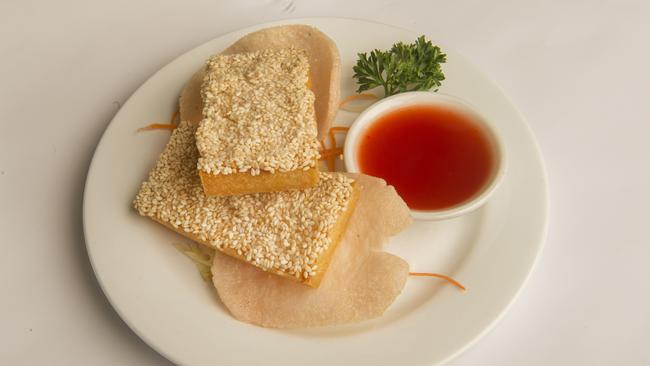
Has the menu changed much?
“Not a lot.”
Jin Yang is now in the hands of Chinese couple Tang Tang (Tony) and Xiao Jiao Sun (Tracy), 30-somethings who are gently updating its decor and improving the ordering system.
On the food front, things are much the same, with braised chicken and cashew nuts or steak with plum sauce among its great stayers. Following Lee’s lead, the new owners are also sourcing local ingredients where possible and making as much as they can in-house.
This approach is sure to please tree-changers who are swapping city life for regional centres such as Ballarat, Bendigo and Castlemaine and looking for quality Chinese fare in their new hometowns.
Another impetus for change is coming from Australia’s second wave of Chinese tourists. Having explored our big cities, many are now venturing into the regions and inquiring if their better Chinese restaurants can do “something off the menu”.
At Jin Yang, Tang Tang obliged a bus load by getting into the kitchen and cooking a Mongolian hotpot. Down at Toi Shan, it’s still long soup and short soup, rainbow steak and deep-fried ice cream.
“Our job is to make people happy,’’ says head chef Chee Kok Hem, as another posse of punters wanders in past the Coca-Cola vending machine.
These “locals” are more comfortable with cutlery than chopsticks and up for a chat over oodles of oolong.
As McGhie says: “Food memories always bring us home and in a changing world where nothing stays the same, it’s nice to know we can still find comfort in a bowl of fried rice.’’
WITH DAN STOCK
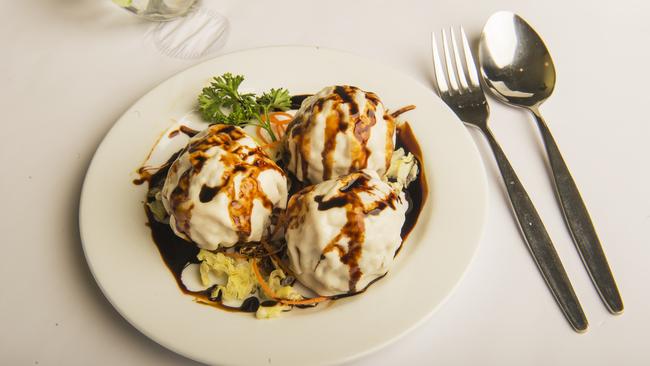
TRIED & TRUE
TIME has not stood still in country Victoria’s Chinese restaurants, with 21st century proprietors finding a place for tofu, Singapore noodles and vegan options.
Even the words “gluten free” are turning up on menus.
But some things never change. Like chop suey (stewed-fried meat with bean sprouts, bamboo shoots and onion) or special fried rice, preferably swivelling on a lazy Susan with soy sauce at the ready.
Here are 10 rolled-gold Chinese-Aussie classics and where to find them:
1. SPRING ROLL (Toi Shan, Bendigo)
2. DIM SIM (Jin Yang, Kangaroo Flat)
3. SESAME PRAWN TOAST (Jin Yang, Kangaroo Flat)
4. SWEET CORN CHICKEN SOUP (Golden Crown, Ballarat)
5. SWEET AND SOUR PORK (Mei Ling, Geelong)
6. HONEY PRAWNS (King City, Shepparton)
7. COMBINATION CHOW MEIN (Jin Yang, Kangaroo Flat)
8. LEMON CHICKEN (New China, Castlemaine)
9. BEEF IN BLACK BEAN SAUCE (Mei Ling, Geelong)
10. DEEP-FRIED ICE CREAM AND BANANA FRITTERS (New China, Castlemaine)
WOK STARS
TOI SHAN (110 years) 65-67 Mitchell St, Bendigo
JIN YANG (37 years) 180 High St, Kangaroo Flat
MEI LING (35 years) 169 Malop St, Geelong
NEW CHINA (34 years) 319 Barker St, Castlemaine
SHEPPARTON FAMILY RESTAURANT (26 years) 302-308 Wyndham St, Shepparton
KING CITY (25 years) 167 Corio St, Shepparton
EMPRESS KING GARDEN (20 years) 160 Scott St, Warracknabeal


